Best 10-Day Itinerary to Tour Andalusia in Southern Spain
Artsy Traveler contains affiliate links for products and services I personally use and can happily recommend. As an Amazon Associate, I earn from qualifying purchases. Please read the Disclosure for more information. If you make a purchase through these links, at no additional cost to you, Artsy Traveler earns a small commission. Thank you!
Heading to Andalusia in southern Spain? You’re in for a treat!
I recommend allocating ten days to tour Andalusia by car. This amount of time allows you to comfortably sample this incredible region.
My suggested itinerary in Andalusia starts in Cordoba and ends in Seville, and takes in Ronda, the White Towns, Cadiz, and Granada, along with lovely Cadiz facing the Atlantic Ocean.
As an artsy traveler, you’ll find more than enough cultural sites and experiences to delight you when touring Andalusia with my suggested itinerary.
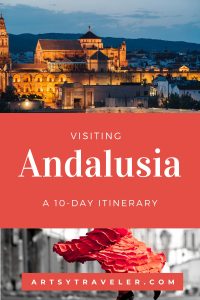
Andalusia at a Glance
- Visit Cordoba, tour the Mezquita, and stay at Balcón de Córdoba
- Spend a day touring the Alhambra in Grenada and stay at Suites Gran Via 44
- See a flamenco performance in Seville and stay at Hotel Amadeus Sevilla
- To tour the White Towns, homebase in Ronda and stay out in the country at Hotel Cortijo Las Piletas
- Take a beach day in Cadiz and stay at the Hotel Monte Puertatierra
Why Tour Andalusia?
To me, Andalusia is Spain on steroids. It’s the Spain of my imagination with bone-white villages perched on rocky crags, the skull-pounding rhythms and olés of flamenco, and tranquil Moorish courtyards with fountains splashing.
I just have to say Andalusia and I feel romantic.
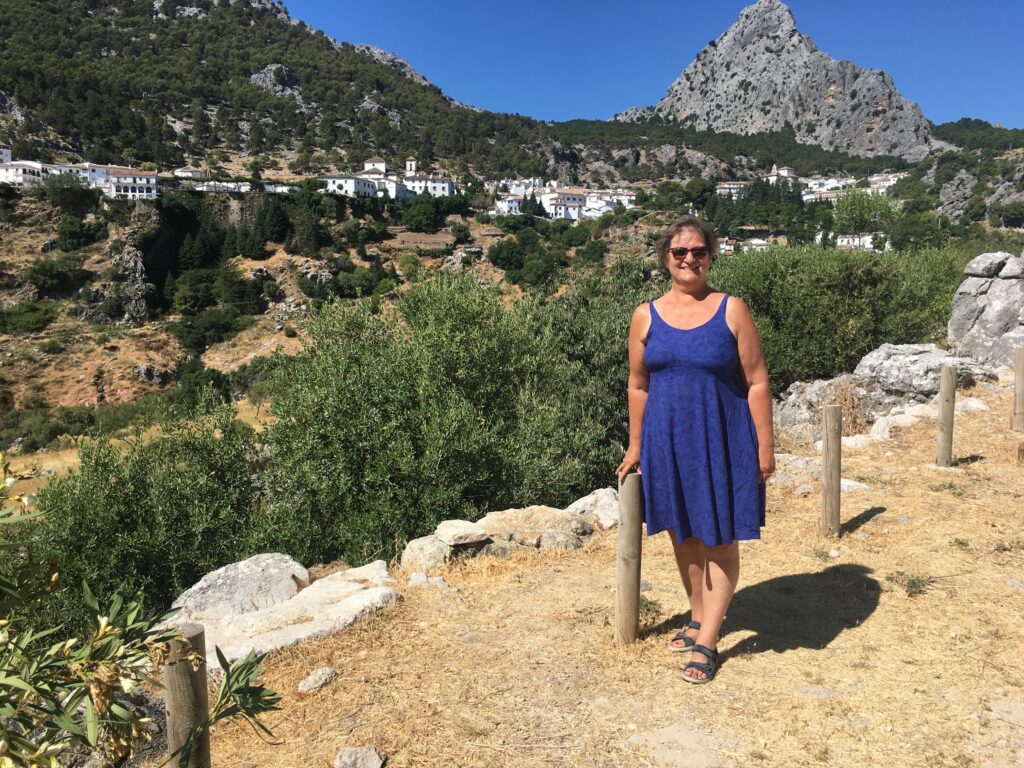
To get you in the mood for touring Andalusia, listen to this clip from Concerto for Aranjuez by Joaquín Rodrigo.
If your heart swells and your palms get a bit sweaty from an excess of romantic swooning, then you’ll know that touring Andalusia is for you!
Getting Around Andalusia
As one of the largest regions in Spain, Andalusia stretches from the Portuguese border in the west, south to the Mediterranean and the resorts on the Costa del Sol, and east almost as far as Cartagena.
Here’s a map of the area:
One way to tour Andalusia is to connect the three principal cities—Cordoba (#1), Granada (#2), and Seville (#5)—by train. The distances are short, and train service is efficient and fast.
On my first trip to the area, I took trains and found the experience easy and relaxing.
If you’re keen on a road trip, add in Cadiz (#4), the White Towns (Pueblos Blancos), and Ronda (#3) (highly recommended).
One option is to take the high-speed train from Madrid to Cordoba, enjoy the city for one night, then rent a car at the airport in Madrid and drive east to Granada for two nights.
Then, circle around to the west to visit the White Towns, Ronda, and Cadiz by way of Arcos de la Frontera.
Drop off your rental car at the airport in Seville, grab a shuttle or a taxi to an apartment in the old town (where I don’t advise driving), and enjoy the final days of your trip in Andalusia.
Suggested Itinerary
For a southern Spain itinerary that combines driving and trains, I suggest:
- One night in Cordoba
- Two nights in Granada
- Three nights in the countryside near Ronda to explore it and the White Towns
- One night in Cadiz
- Three nights in Seville.
Highlights of your week include visits to the Alhambra in Granada and the Mosque-Cathedral in Cordoba, touring gorgeous Ronda and the White Towns, basking on the beach at Cadiz, and, of course, enjoying flamenco pretty much everywhere, but particularly in Seville.
Best Time to Visit Andalusia
Summers are HOT in southern Spain so you may want to plan your trip for April, May, September or October.
I’ve visited the area during both those times and found the weather just about perfect. I also visited Seville in July and found it a bit stifling. If you travel during the summer, make sure you rent an air conditioned place, take the afternoons off for siesta, and do your touring in the mornings and evenings.
Train to the South from Madrid
If you’re starting in Madrid, you may want to take the train to the south and then rent a car.
On one trip to the area, I took an early morning train from Madrid to Cordoba, and was glad I was on the train and not driving. The distance is quite vast and the landscape stark and beautiful, but not particularly varied. You’ll pass a lot of olive trees.
On another trip to Spain, I drove from Toledo (just south of Madrid) to Ronda (not far from Cordoba). As I discovered when watching the landscape from the train on my first trip, the vast distance doesn’t improve when seen from a car.
However, driving in Spain is not difficult. The roads are good and the traffic is generally light. But like anywhere in Europe, you want to avoid driving into medieval towns and villages. Park on the outskirts and walk or take a taxi.
Day 1: Cordoba
I arrived in Cordoba and moments later was careening through the historic Jewish Quarter in the back seat of a taxi driven by a guy who didn’t know where he was going.
As we had all morning, my husband and I continued to congratulate ourselves for not driving.
Enjoying this post? Subscribe to Artsy Traveler to Receive Valuable Travel Tips and Your FREE Guide: 25 Must-Do Artsy Traveler Experiences in Europe for 2025
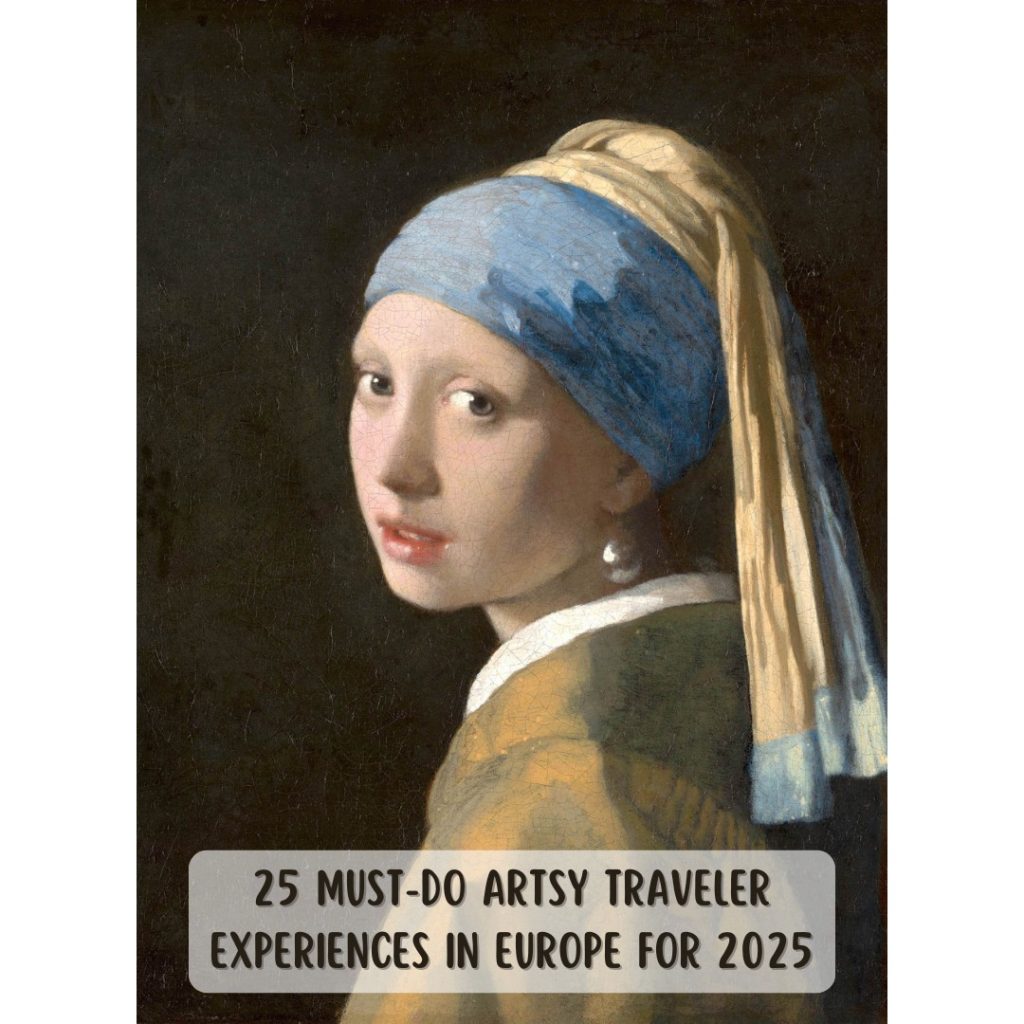
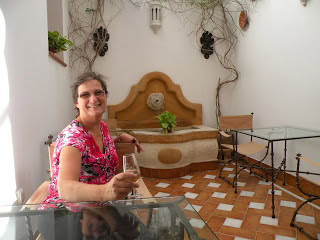
Finally, the driver found the lovely little hotel on a small square in the maze of tiny streets. I entered a cool courtyard where a fountain tinkled and the friendly proprietor offered me a cold glass of wine. Heaven after a long day of traveling!
Balcón de Córdoba is a good place to stay In Cordoba, or pretty much anywhere deep in the Old Town.
Exploring Cordoba
Refreshed from our drink and a rest, we ventured out into this lovely old city. One can’t help but love Cordoba.
The old town is compact, with plenty of twisting medieval streets, and the Mosque-Cathedral and the Roman Bridge are world-class sites.
Touring the Mosque-Cathedral (Mezquita)
Visit the Mosque-Cathedral (a UNESCO World Heritage site) in the late afternoon or early morning. With any luck, the tour groups will have dissipated, leaving you space to enjoy this incredible place in relative solitude.
Wander around to soak up the history and then, if you can, hover at the edges of a guided tour to pick up some information about the history and architecture.
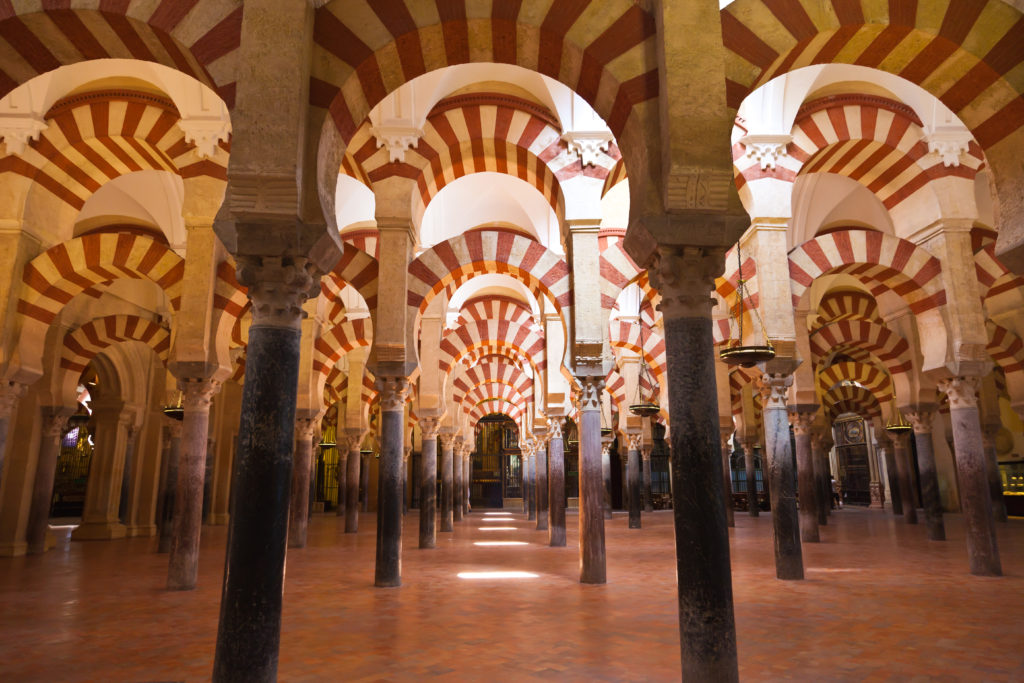
Around 900 AD, Cordoba under Moorish rule had 400,000 inhabitants and was one of the most sophisticated cities in Europe. In those days, the mosque was called the Mezquita and was a glorious forest of arches and columns.
In the 15th century, the King built a church in the center of the mosque – a terrible shame, from an architectural standpoint. However, be grateful that they didn’t pull down the mosque itself so we can still see what it looked like in its heyday. What’s left of the mosaics, and the lovely symmetry of the columns and arches, provides an interesting contrast to the overly ornate church bits.
Enjoying Flamenco in Cordoba
In the evening, enjoy tapas in the historic quarter and then catch a flamenco performance at the Tablao El Cardenal. We were entranced for over two hours.
Two guitar players, two male singers, five female dancers, and one male dancer made up the company. Unbelievable!
The male singers did things with their throats that I didn’t think humanly possible, and the flamenco guitarists were breathtaking. And then there were the dancers! Both soloists and ensembles performed what sometimes looked choreographed and at other times improvised, inspired by the singers and guitarists.
Strolling the Roman Bridge
After the show, wander out to view the Roman Bridge dating from the 1st century BC that spans the Guadalquivir River. Walk across and look back to see the floodlit Mosque-Cathedral.
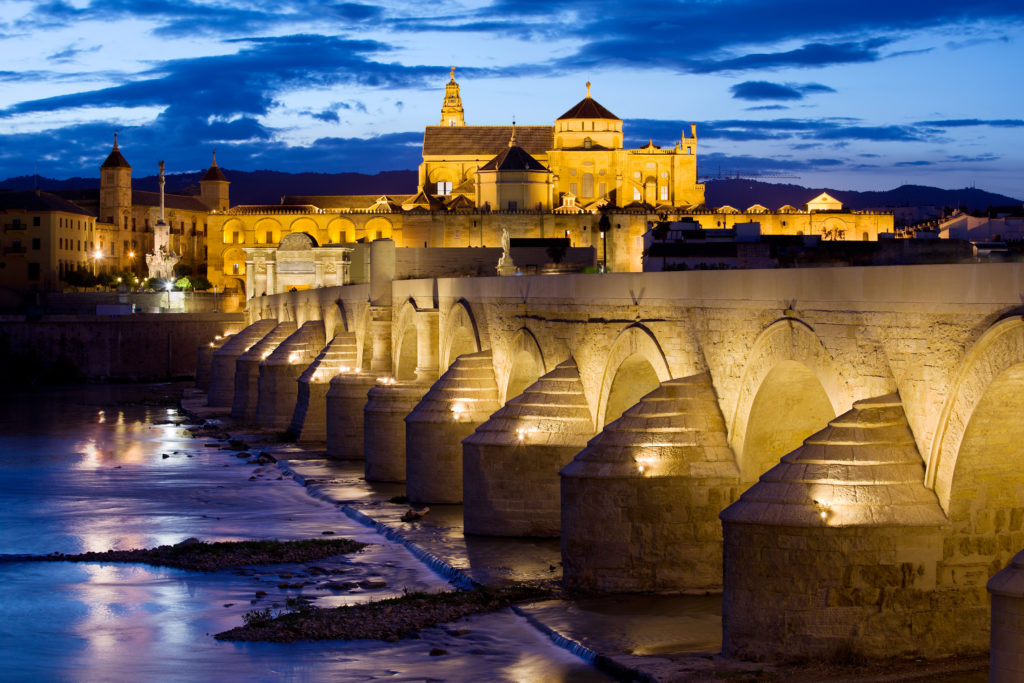
Cordoba Tours
Here’s an option that includes the highlights of Cordoba:
Days 2 & 3: Granada
Drive about two hours or catch a train to Granada. If you’re driving, take a detour to the las Sierras Subbéticas National Park to enjoy amazing views.
Granada is a thriving town with more going for it than just the Alhambra. Spend your first afternoon and evening walking around the backstreets and barrios of this lovely city. Stop by one of the lively plazas for a drink and tapas and watch the world go by. You might hear a band playing in a nearby park.
Also, stroll up to Sacromonte, the atmospheric gypsy quarter. Peer into cave houses and later in the evening enjoy more flamenco.
Visiting the Alhambra
Buy your tickets for the Alhambra within three months of your visit to Granada. Your ticket is valid all day. However, you need a special time-slot admission ticket to visit the Nasrid Palaces (Palacios Nazaries) at the heart of the Alhambra. If possible, choose a time early in the day to have a fighting chance of beating the crowds.
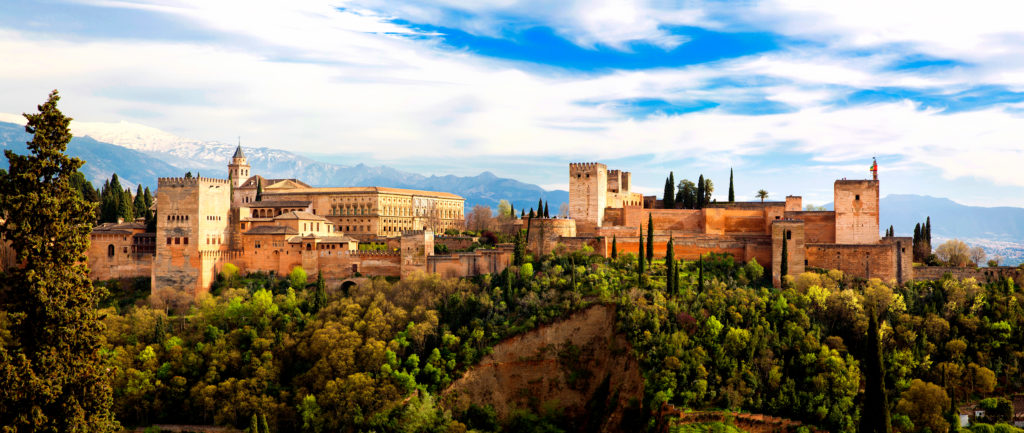
Take a taxi up to the Alhambra (taxis are not expensive).
The Alhambra complex is huge. You’ll walk a lot, but every few steps you’ll see another new and glorious vista or intriguing detail to admire.
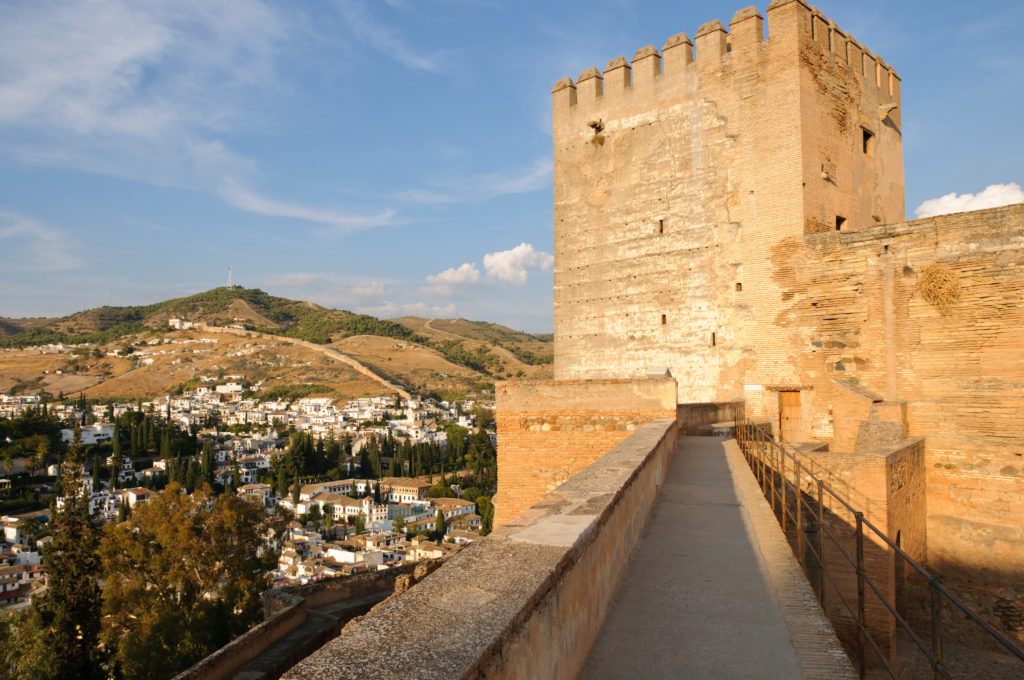
Touring the Nasrid Palaces
About thirty minutes before the time noted on your ticket for the Nasrid Palaces (Palacios Nazaries), line up at the entrance. The signs and the line-up are hard to miss!
Even in the morning, the crowds will be large, making the visit through the rooms of the palace a claustrophobic squeeze. Check out the drippy stonework on the ceilings, the incredible tilework, and the serene courtyards.
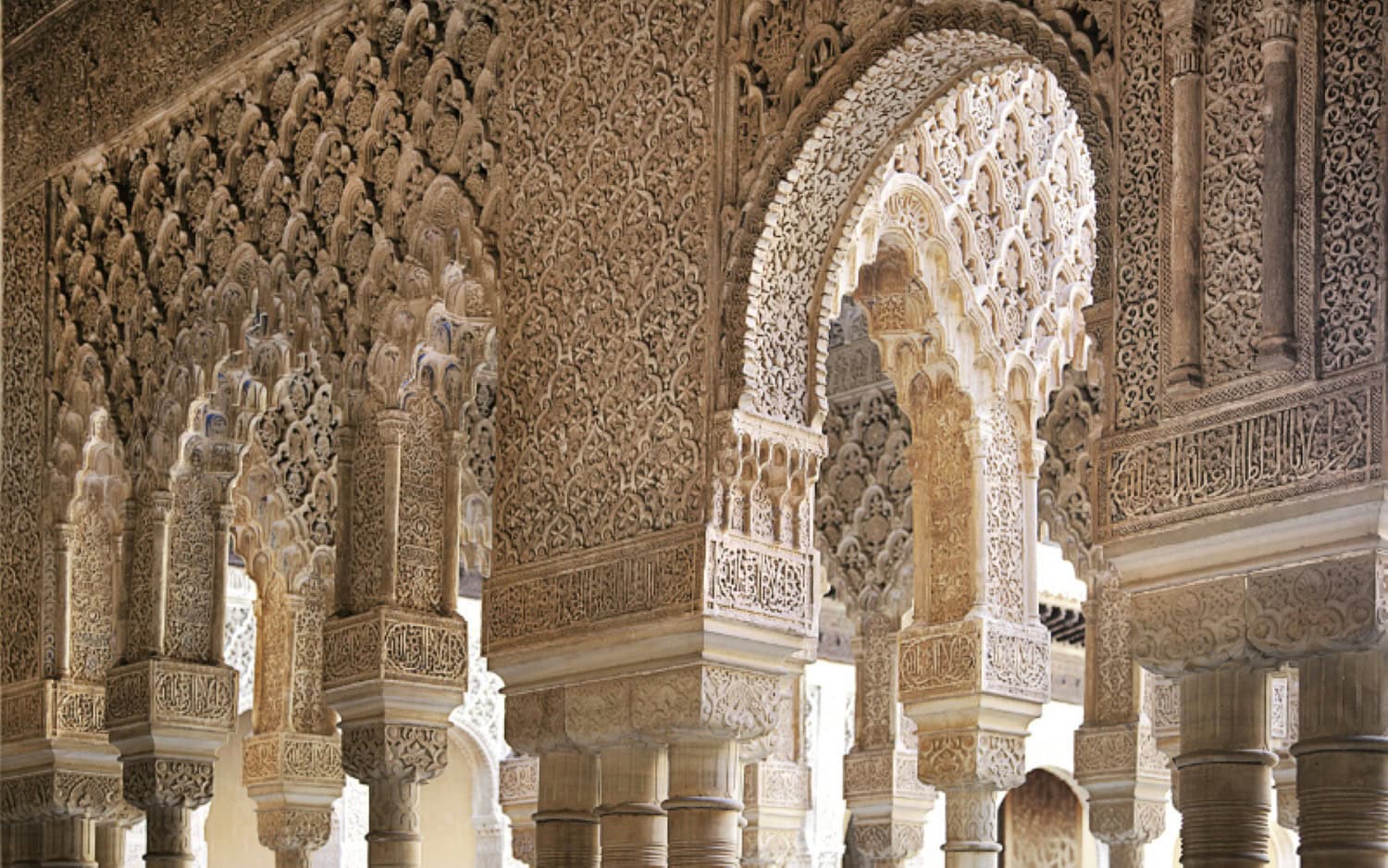
After visiting the palace, wander over to the Generalife Gardens which are usually not so crowded as the Alhambra and contain many more fountains. Apparently, the fountains are a 19th-century addition, since the Moors preferred standing water to fountains.
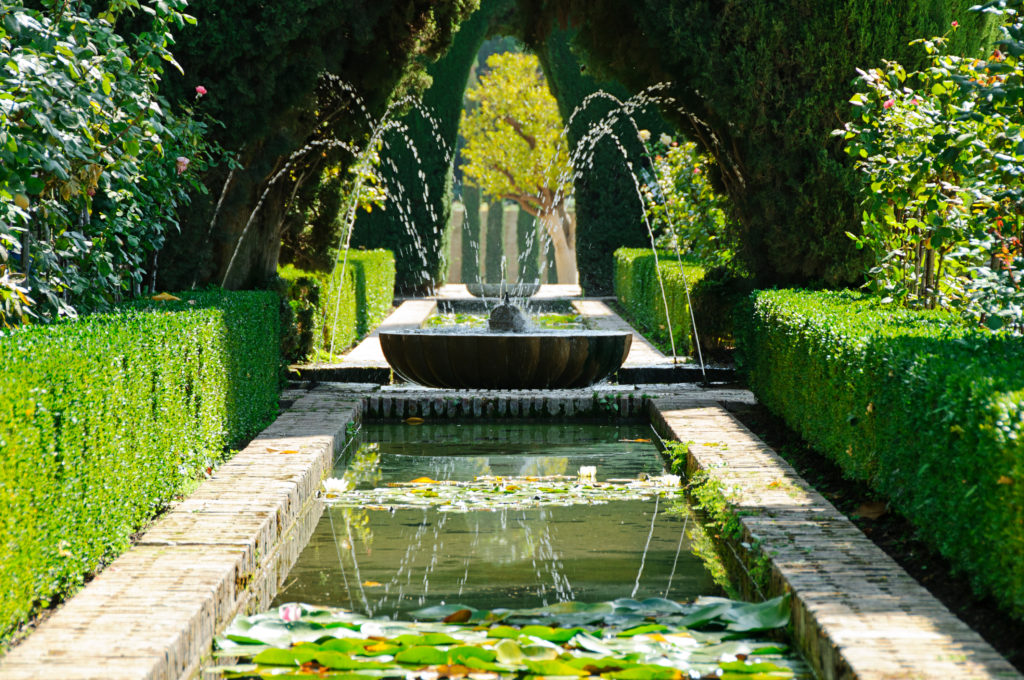
Spend the rest of the day relaxing after the exertions of the Alhambra, do some shopping, eat more tapas, and chill. End the day with more flamenco!
Options for Touring the Alhambra
Here are some options for ways to tour the Alhambra:
In Granada, consider staying at the Suites Gran Via 44. You’re within walking distance of the old town and the rooms are large and comfortable and include a small kitchen.
Days 4 to 6: Ronda & the White Towns
Take your time enjoying this lovely and rugged region of Spain. The White Towns (Pueblos Blancos) get their name from the white-washing on the walls of most of the houses. Set amidst rocky gorges and jagged cliffs, they gleam in the heat under harsh blue skies.
Many of the towns are located within the Sierra de Grazalema Natural Park.
I suggest home-basing at a rural property outside of Ronda. We stayed at the Hotel Cortijo Las Piletas, a wonderful family-run hotel about a twenty-minute drive from Ronda on the road leading to the Caves of Pileta. For more about the Caves, check out Prehistory Sites in Europe: 7 Spine-Tingling Ancient Places.
Relax during the heat of the day, and then tour the towns in the early morning or late afternoon.
Ronda is worth a day of your time. The famous gorge is, well, gorgeous, particularly at sunset. We enjoyed a dinner overlooking the gorge and the bridge spanning it, and then stood at the edge of the bridge to watch the sun set over Andalusia.
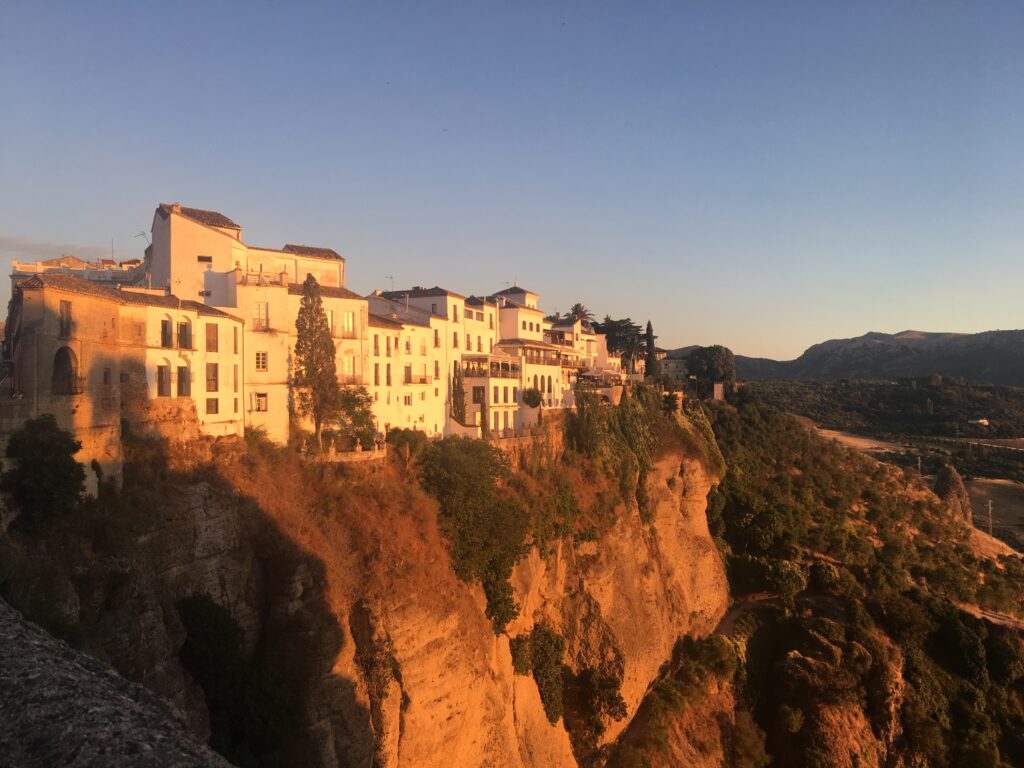
Breathtaking! And so romantic!
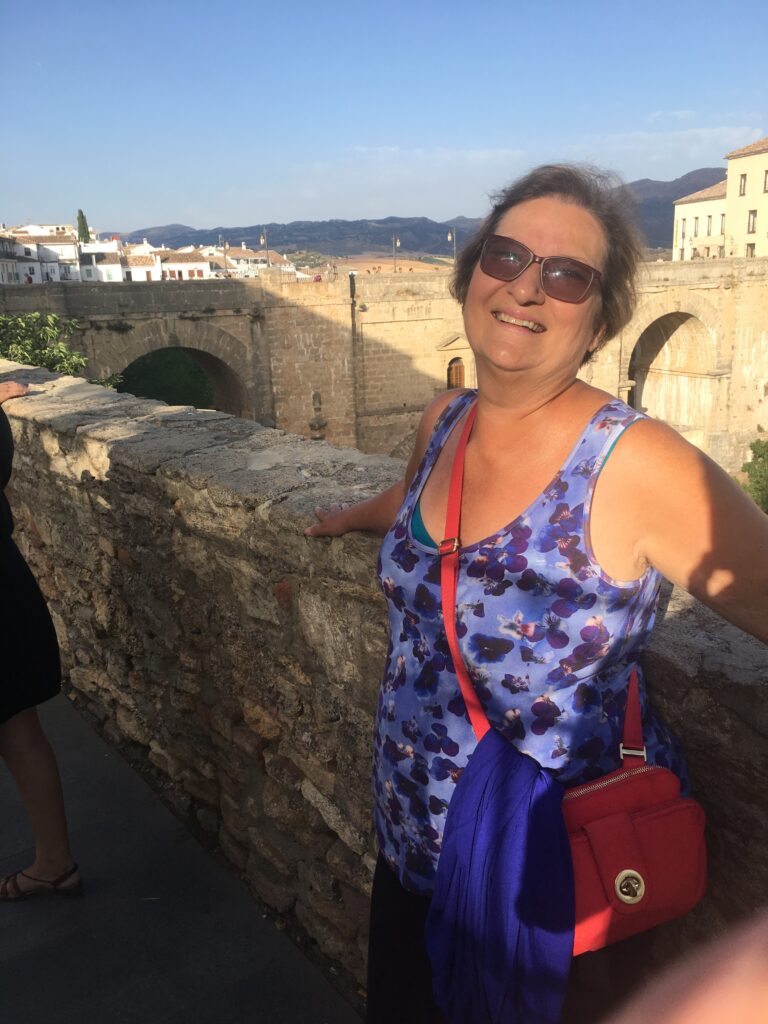
Walk out onto the bridge and look down. It’s a long, long way down to the gorge.
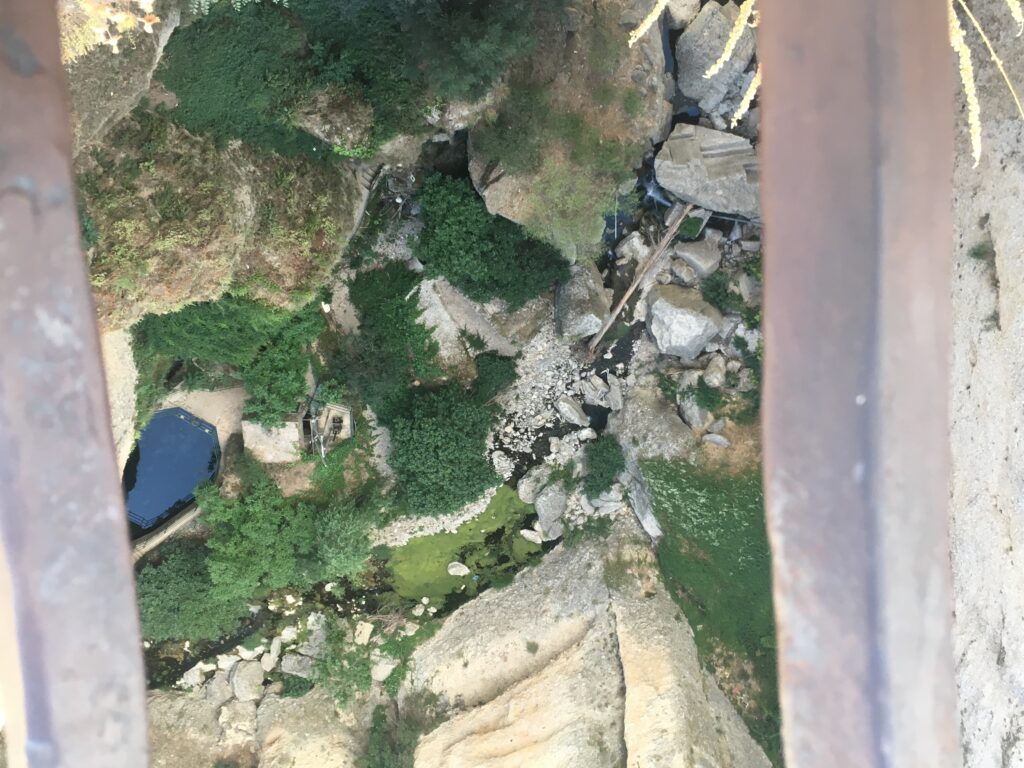
The tiny roads linking some of the White Towns, such as Zahara de la Sierra and Grazalema, are extremely twisty. Slow down and take your time navigating the hairpin turns while gasping at the spectacular vistas.
Here’s a tour that goes from Seville and visits Ronda and some of the White Towns of Andalusia:
Day 7: Cadiz
I craved a bit of beach time but wasn’t keen on making the scene in the coastal resorts of the Costa del Sol near Malaga.
So, I headed to Cadiz by way of Arcos de la Frontera—one of the larger but picturesque White Towns.
Instead of trying to navigate the narrow streets of old Cadiz, stay at a hotel along the main drag leading to the city and walk a block to the ocean. We stayed at the Hotel Monte Puertatierra.
The beach stretches for miles, and the swimming is fabulous. Just about everyone on the beach was a local. Cadiz isn’t on the tourist beat.
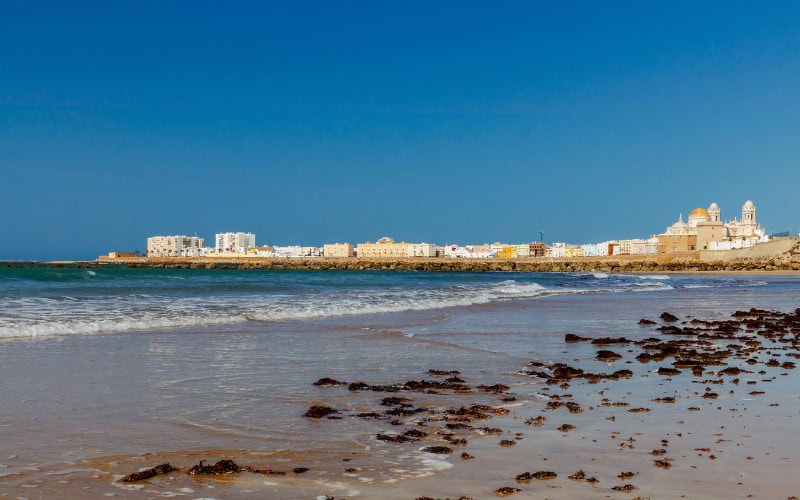
Again, slow down and enjoy. In the evening, find a place alongside the sea front for a leisurely dinner and watch the sun sink below the horizon.
Days 8 to 10: Seville
And finally, to Seville—the jewel of Andalusia (in my opinion!). I adore Seville and after two visits, I am nowhere near done with it.
Although a substantial city, the core of Seville is easily walkable and oh-so-picturesque. Yes, it can get crowded, particularly around the massive Seville Cathedral, but walk a few blocks and you’ll have the streets to yourself.
The two major attractions are the Seville Cathedral and the Real Alcázar—the Alcázar Palace.
Visiting Seville Cathedral
The cathedral is decorated with much of the gold brought back by the Conquistadors and, although beautiful, is a little over-the-top. But do pop in for a look. A guided tour is a good idea.
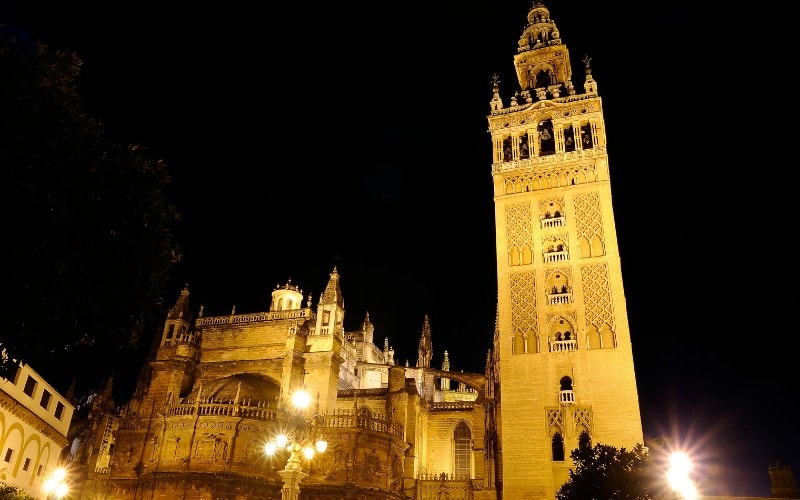
Touring Real Alcázar
A UNESCO World Heritage Site, the Real Alcázar is worth a visit. It’s a palace, still in use by the royal family, that was built by Christians on the site of a Moorish fortress. The Alcázar is considered a preeminent example of the Mudéjar style of architecture characterized by decorative motifs first developed by the Moors.
Line-ups are long, so make sure you get tickets in advance and wear good walking shoes. There’s a lot to see here!
Enjoying More Flamenco
Visit the Flamenco Museum and enjoy a show (or two) of flamenco in one of the many venues. We favor Los Gallos for its intimate setting. Get tickets in advance. Read Flamenco for my take on the flamenco experience in Seville.
Here’s an option for tickets through GetYourGuide:
Hanging Out in Seville
The real charm of Seville is the city itself—the outdoor cafés, the views along the riverside, the palm-studded parks, the tiny streets often shaded by canopies to keep out the sweltering heat.
Yes, Seville is hot. On a trip there in July, the thermometer grazed 41 degrees C (over 100 degrees F). Make sure you book an apartment or a hotel room with air conditioning, even if the cost is higher.
Spend the mornings sightseeing, return to your cool apartment in the heat of the day for siesta (such a civilized custom!), then venture out around 7 to start your evening. In Seville, the action barely gets going until after 10 pm.
Options for Touring Seville
Exploring the Area
Here are some more GetYourGuide tours in Andalusia.
Conclusion
Have you visited Andalusia? If so, you’ll know that ten days isn’t long enough to see all there is to see. Culture, art, and landscape come together in Andalusia to deliver one of Europe’s best artsy travel experiences.
Here are more posts about Spain on Artsy Traveler:
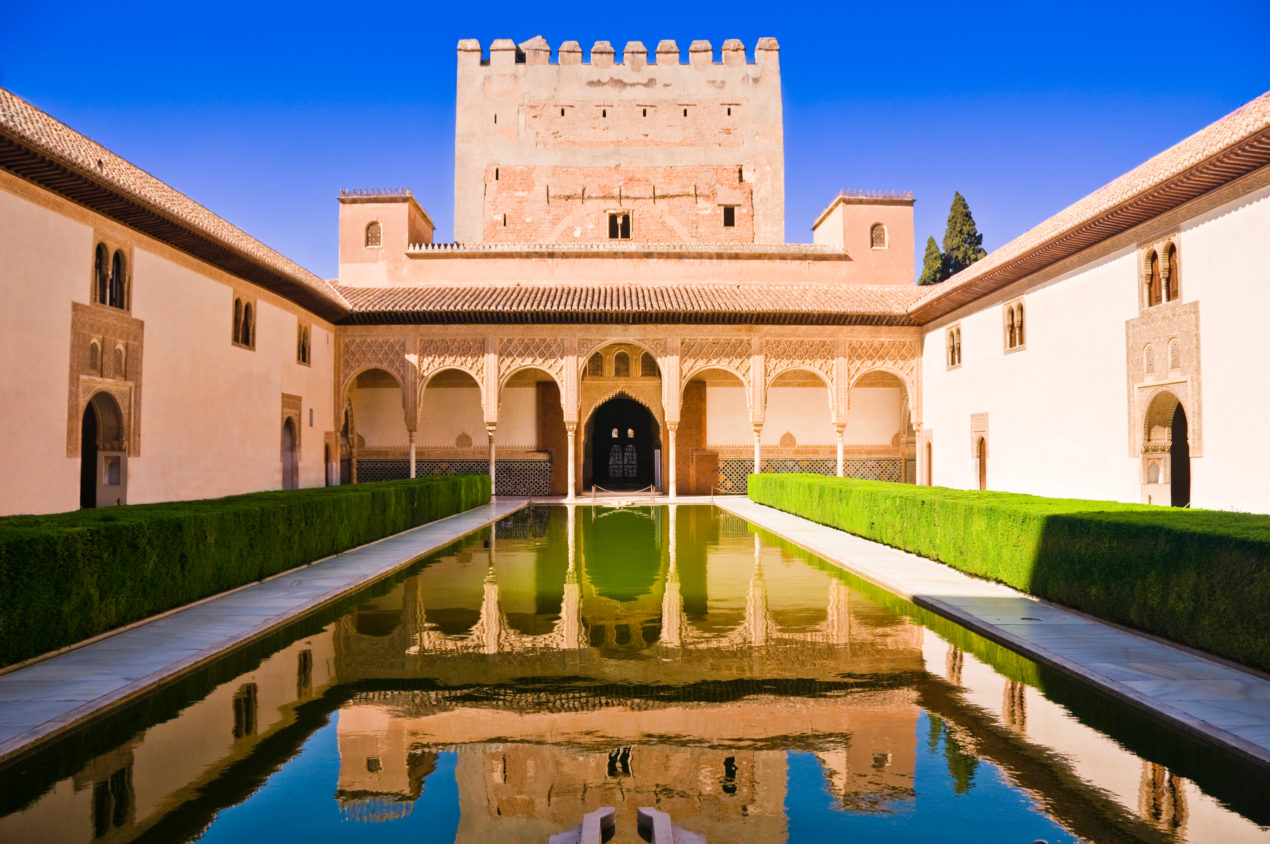
[…] Read my suggestions for A Circle Tour of Amazing Andalusia. […]
[…] Seville Cathedral and The Cathedral of Cordoba: A Circle Tour of Amazing Andalusia […]
[…] charming town of Ronda in fabulous Andalusia is not far from the caves. Stop here for a meal and to enjoy the sunset over the surrounding […]